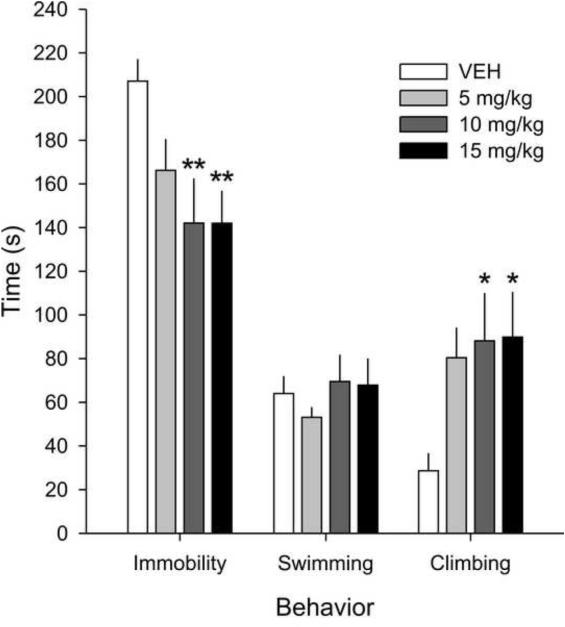Figure 3.
Graph illustrating the effects of different doses of desipramine (5, 10 or 15 mg/kg) or vehicle (VEH; sterile saline) on behavior in the forced swim test (FST). The 10 and 15 mg/kg doses of desipramine, but not the 5 mg/kg dose, increased climbing behavior and decreased time spent immobile, without affecting swimming behavior, compared to VEH-treated controls. Behavior was measured continuously and is expressed as mean total time +SEM. Data were analyzed using a one-way analysis of variance (ANOVA) with drug dose as a between-subjects factor. * p < 0.05 vs VEH, ** p < 0.01 vs VEH; Fisher’s protected least significant difference (LSD) test. n = 8 for all groups.

